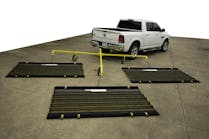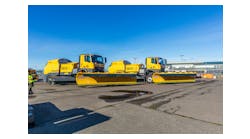Get Started on a FOD-Free Environment
Foreign object debris (FOD) is one of the leading causes of ground-based aircraft damage. FOD comes in many shapes and sizes, from the tools used during aircraft maintenance, to the fallen pieces or parts of the aircraft itself. Even the ring on a person’s finger has the potential to become FOD.
If it can cause foreign object damage, it’s FOD, says The FOD Control Corporation.
With so many FOD potentials, preventing FOD is a diverse practice with no one-size-fits-all approach that can be applied to all areas of the airport. However, there are some general rules of thumb that can help eliminate FOD no matter the location.
Writing in the October 2019 edition of Flightfax, the U.S. Army’s aviation safety-focused newsletter, Michael Ward, academic instructor, Eastern ARNG Aviation Training Site, lists good housekeeping as an important first step to FOD elimination.
Speaking particularly to aviation maintenance technicians, Ward says the “clean-as-you-go” approach can go a long way to FOD elimination. Instead of waiting to sweep the station until the end of the day, which could lead to debris being picked up on a boot and carried away, technicians should clean and utilize a FOD container as they go, for example.
Good housekeeping also goes hand-in-hand with tool control – another critical aspect of FOD prevention. Being mindful of where tools are at the beginning and end of a shift is critical.
The FOD Control Corporation recommends technicians at the beginning of a shift look around to ensure everything is in its proper place. Are tools in the proper place and is the area free of parts and other debris? By doing these simple checks, technicians can create and inventory and easier track items as they are used throughout the day.
“Store unused tools and parts in closed containers. Do not leave them out in the open where they can go missing when you are not paying attention to them. If storage is not possible, array them in an organized manner so that you will immediately notice when something is missing,” the FOD Control Corporation advises.
FOD elimination is not any one individual’s job, however. Teamwork is key in ensuring a safe aviation environment and FOD walks can be an effective tool to both FOD elimination and building a FOD-mindful work culture.
Ward writes that whether it is a scheduled FOD walk or when moving an aircraft, workers should be trained to keep an eye out for and remove FOD when they see it. He also says to document the FOD discovered and trend it. That information can then be used to develop both mitigation strategies, educated workers and even potentially solve how certain FOD is arriving where it’s found, Ward says.
The backbone of successful FOD walks and other FOD-elimination protocols start with leadership, says the FOD Control Corporation.
“Everyone should encourage their colleagues to stay alert for FOD and the conditions that can create FOD,” they continue. “Senior management should promote that teamwork as strongly as it would any other safety or quality policy. Set clear goals and procedures and monitor compliance actively.”
FOD awareness and elimination is both multi-faceted and critical, and the advice here only scratches the surface. But at its basic, to prevent FOD starts with one simple action: If you see it, pick it up!




